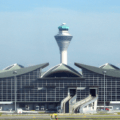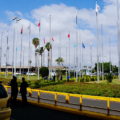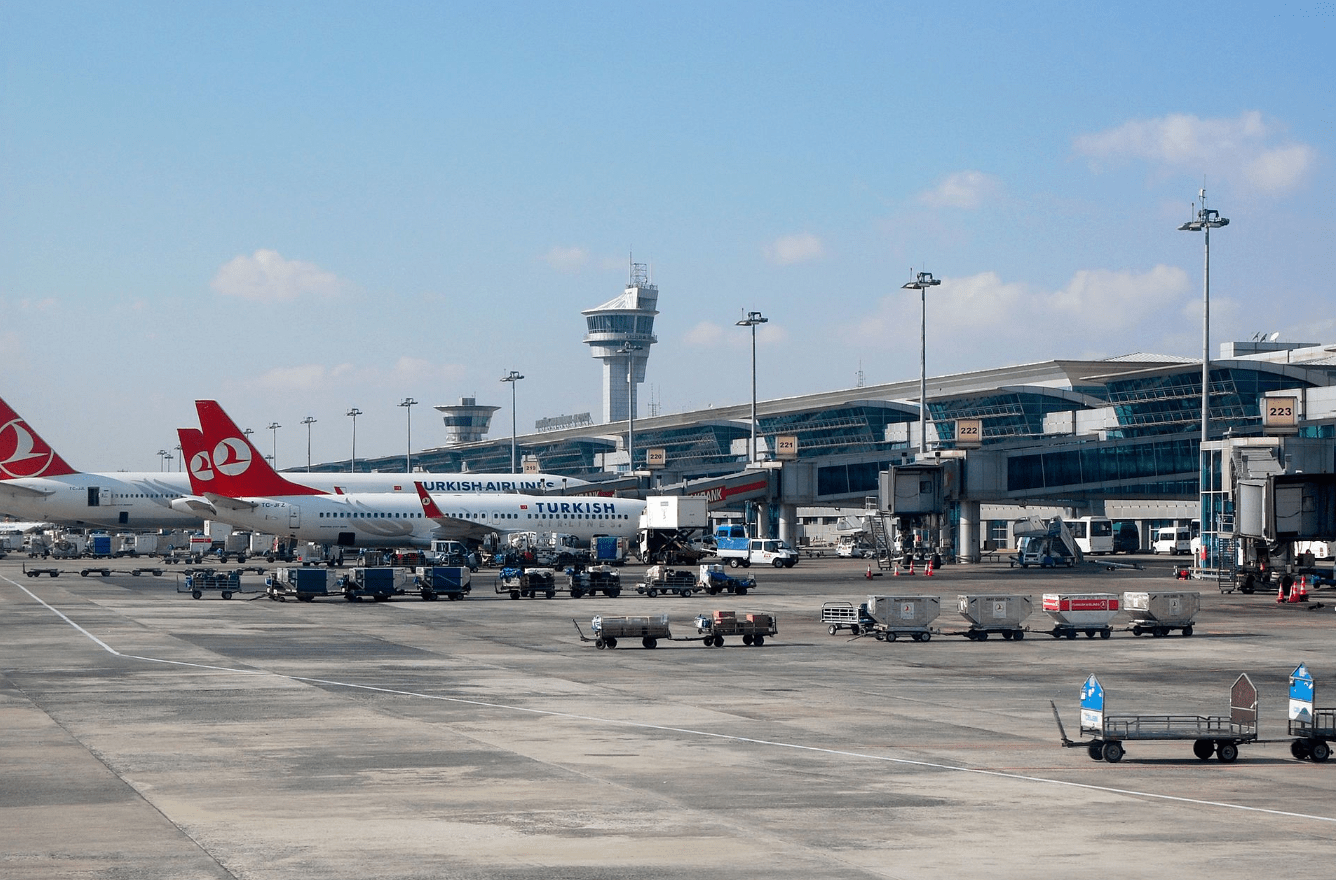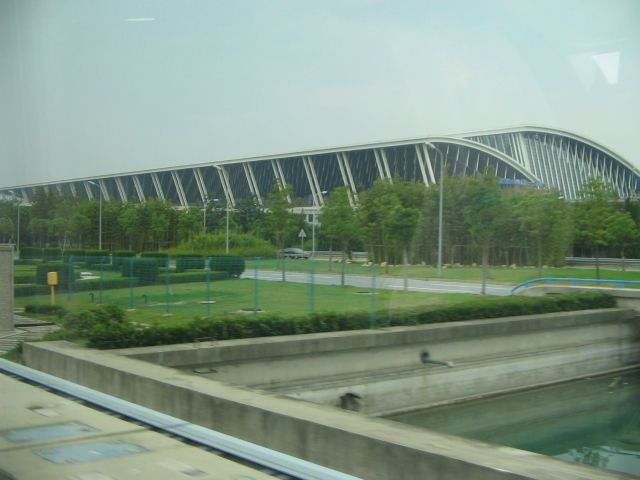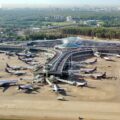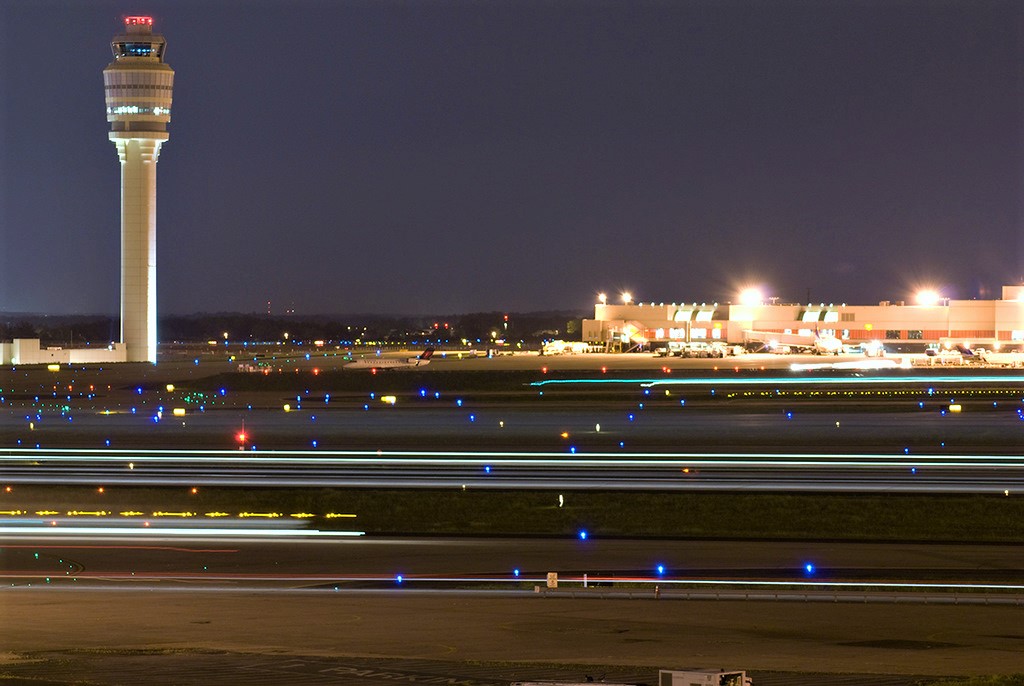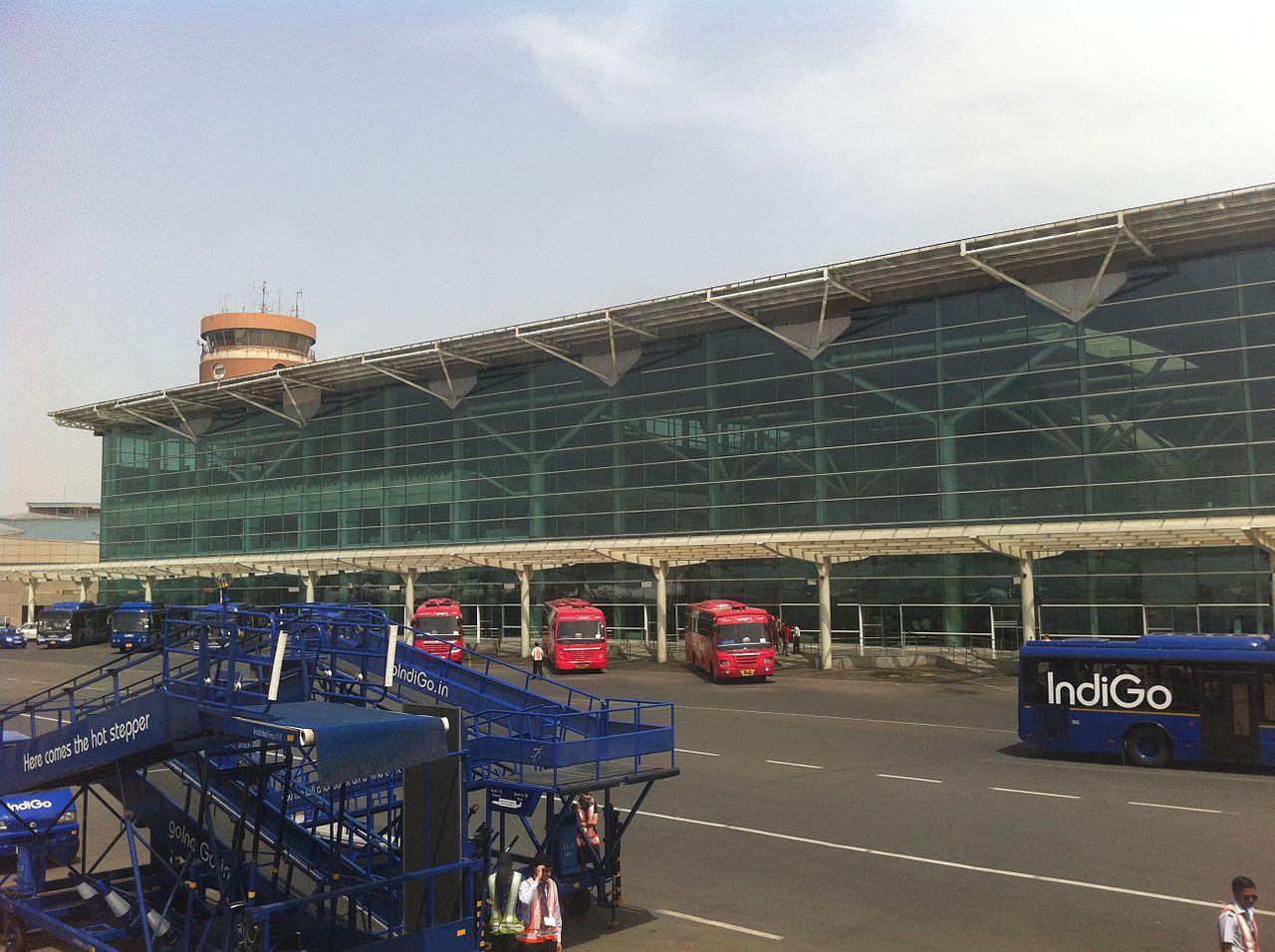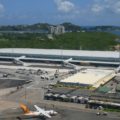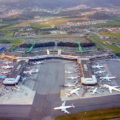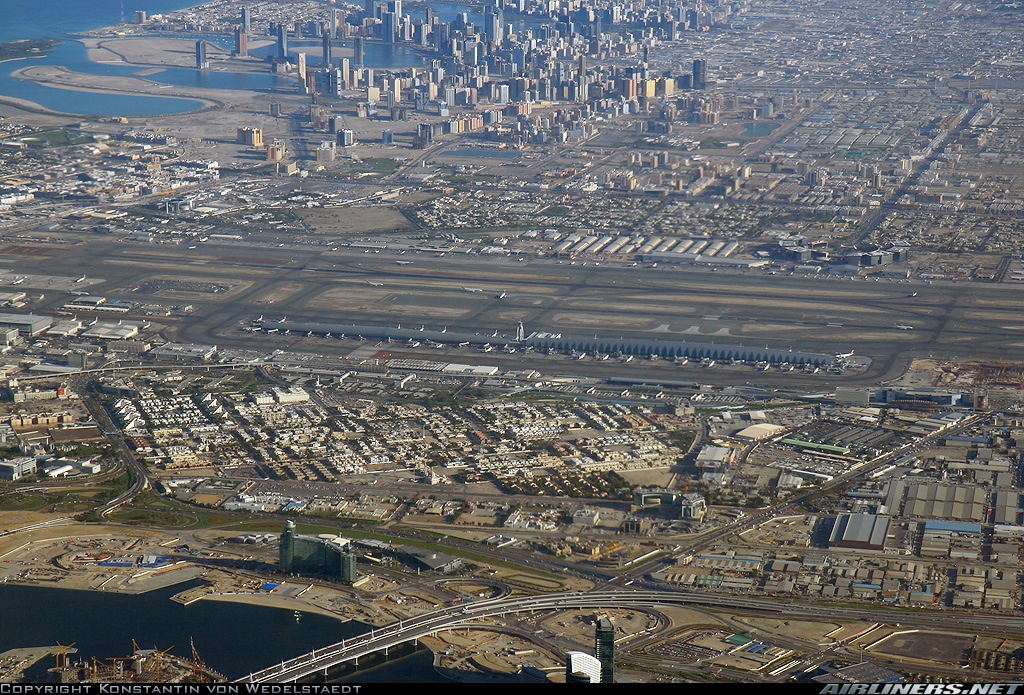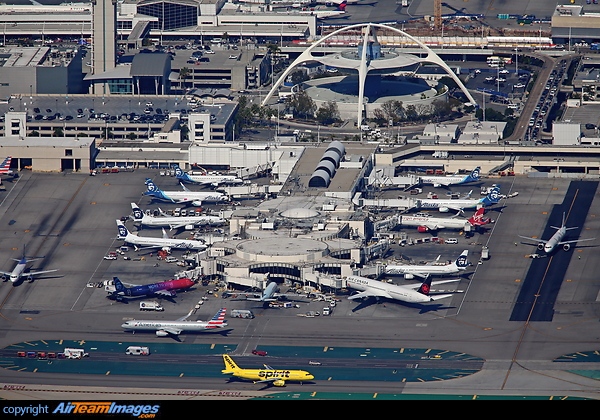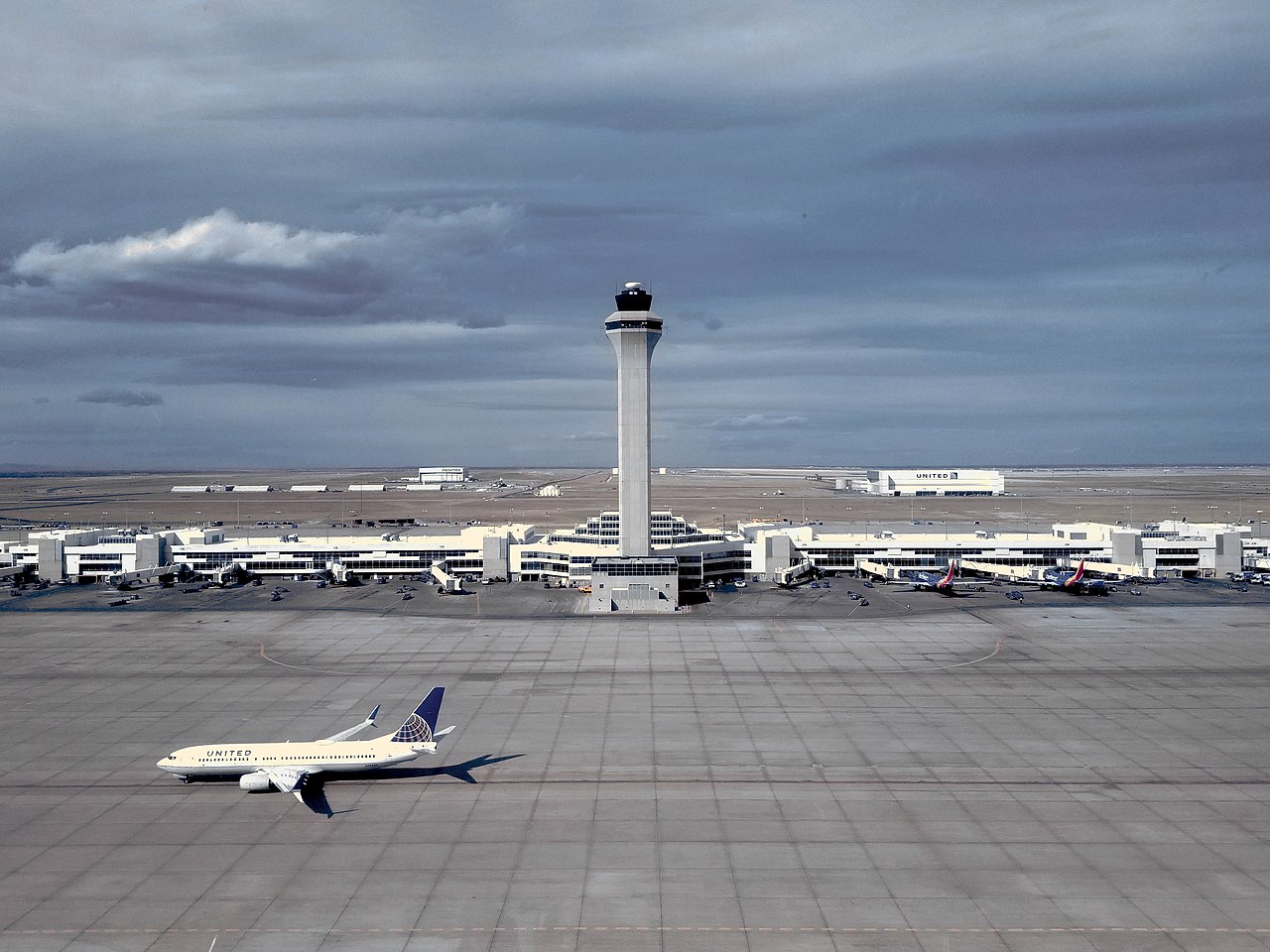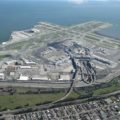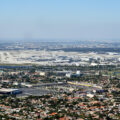Aviation
Jakarta Soekarno-Hatta International Airport
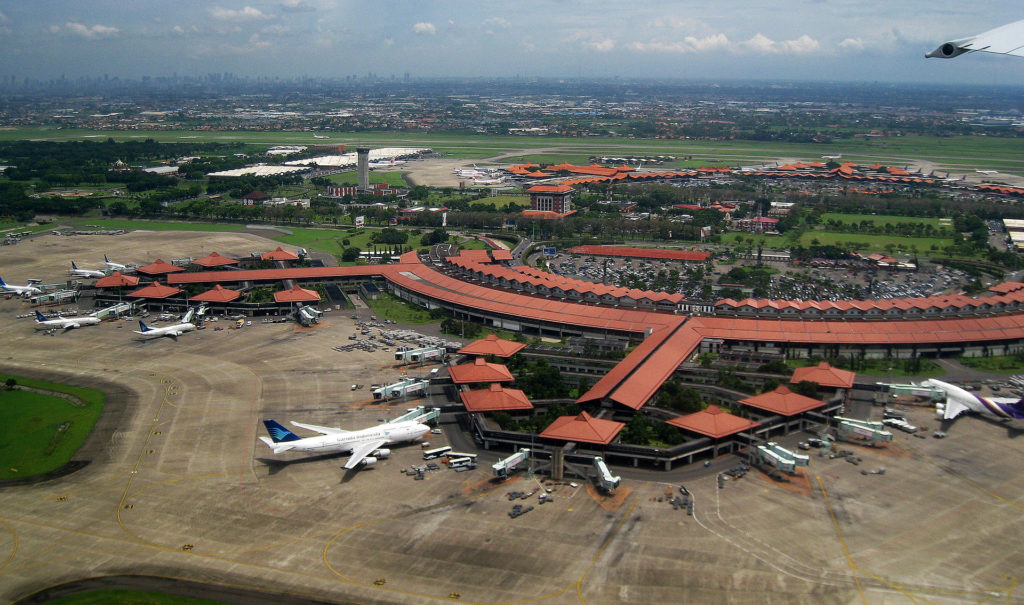
Source: Gunawan Kartapranata
| IATA: CGK ICAO: WIII WMO: 96749 | |
| Airport type | Public |
|---|---|
| Owner | Government of Indonesia |
| Operator | PT Angkasa Pura II |
| Serves | Jakarta metropolitan area |
| Location | Tangerang, Banten |
| Opened | 1 May 1985 |
| Hub for | Batik Air Cardig Air Citilink Garuda Indonesia Indonesia AirAsia Lion Air Nam Air Sriwijaya Air AirAsia |
| Elevation AMSL | 32 ft / 10 m |
| Coordinates | |
| Website | http://www.soekarnohatta-airport.co.id/ |
Soekarno–Hatta International Airport (Indonesian: Bandar Udara Internasional Soekarno–Hatta) (IATA: CGK, ICAO: WIII), abbreviated SHIA or Soetta or Cengkareng airport (Indonesian: Bandara Cengkareng) (hence the IATA designator “CGK”), is the primary airport serving the Jakarta metropolitan area on the island of Java in Indonesia. Named after the first president and vice-president of Indonesia, Soekarno and Mohammad Hatta, the airport is located at Benda, Tangerang, which is about 20 km northwest of Central Jakarta. Together with Halim Perdanakusuma International Airport, they served over 80 million passengers in 2019.
The airport commenced domestic operations on 1 May 1985 replacing the old over-capacity Kemayoran Airport. The airport was expanded in 1991 to replace Halim Perdanakusuma International Airport for international flights, which still serves domestic charter, VIP, private flights, and re-opened as a second commercial airport for domestic flights to relieve pressure over Soekarno-Hatta airport that is currently running overcapacity. The airport served 66.9 million passengers in 2018, ranked as 18th busiest airport in the world by Airports Council International, and the busiest in Southeast Asia. According to air travel intelligence company OAG, the airport ranked as the 7th most connected airport in the world, and ranked first as ‘megahub’ airport in Asia-Pacific region as per connectivity index, ahead of Japan’s Tokyo Haneda Airport and Australia’s Sydney Airport. The airport ranked as the 7th most connected airport as ‘megahub’ in the world in 2017 again by air travel intelligence company OAG. The airport ranked as the 2nd most connected Low-Cost Megahub airport as ‘megahub’ in the world in 2018 by air travel intelligence company OAG.
The airport often struggles to accommodate all flights at its current limit of 81 aircraft movements per hour. Although overcapacity, after a survey ACI in 2012 declared that Soekarno–Hatta International Airport is being operated safely. The two existing runways suffer from pavement and strength issues, which limits the airport’s capacity to serve large aircraft. To reduce congestion and to achieve a target to handle 100 flights/hour, the third runway opened in August 2019. Upgrades of the existing two runways for safety and to accommodate wide-bodied aircraft are almost complete . The airport will be able to serve 100 million passengers annually by 2025 after completion of ongoing development work.
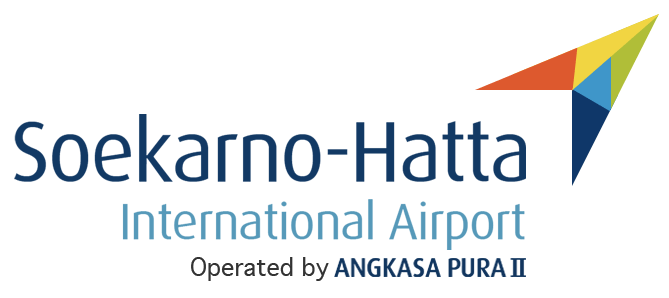

Design


Javanese-styled pendopo waiting and boarding pavilions.
Source: Gunawan Kartapranata
The airport’s terminal 1 and 2 were designed by Paul Andreu, a French architect who also designed Paris–Charles de Gaulle Airport. One of the characteristics of the airport is the incorporation of the local architecture into the design and the presence of tropical gardens between the waiting lounges. These unique characteristics earned the airport the 1995 Aga Khan Award for Architecture. The runways run northeast-southwest. There are two parallel runways, on the north and south side. The airport terminal took the plan of spanning fan, with the main entrances of terminals connected to a series of waiting and boarding pavilions via corridors. These waiting and boarding pavilions are connected to the airplanes through boarding bridges. Terminal 1 is on the southern side of the airport, while Terminal 2 and 3 are on the north side.
The airport concept is described as “garden within the airport” or “airport in the garden”, as tropical decorative and flower plants fill the spaces between corridors, waiting and boarding pavilions. The boarding pavilions demonstrate local Indonesian vernacular architecture, particularly the roof, in the Javanese stepped-roof pendopo and joglo style. The interior design displays the diversity of Indonesian art and culture, with ethnic decorative elements taken from wooden carvings of Java, Bali, Sumatra, Dayak, Toraja to Papua. Another example is the railings of stairs, doors, and gates, which show the kala-makara (giant head and mythical fish-elephant creature) theme typical in ancient Indonesian temples such as Borobudur. Terminal 3, however, has a different architectural style—unlike the ethnic-inspired Indonesian vernacular architecture of terminals 1 and 2, terminal 3 uses the contemporary modern style of large glass windows with metal frames and columns.
Terminals
There are three main terminal buildings; Terminal 1, Terminal 2 and Terminal 3. The airport also has a dedicated freight terminal for domestic and international cargo.
After renovations and expansions of Terminal 3, the current capacity of Soekarno–Hatta is 51 million,[31] but the airport served 54 million passengers in 2015, making it the 18th busiest airport in the world, and the busiest airport in the Southern Hemisphere. There are non-stop flights to a large number of destinations in Asia and Australia, and several flights to Europe daily, ranking as the 17th most connected airport in the world, and the largest megahub in Asia according to OAG.
Terminal 1 and Terminal 2 are currently under renovation, which will cost Rp 3.2 trillion ($235.2 million). The renovation works is targeted to be completed by 2021. The revitalization project is expected to double the number of passengers of the two terminals up to 36 million a year. Terminal 1 caters to domestic Low cost carrier, while Terminal 2 caters to international Low cost carriers. Terminal 3 will become a full-service terminal for both domestic and international flights. The airport operator AP II has undertaken plan to build a fourth terminal at Soekarno-Hatta, which is expected to be completed by 2024.
Terminal 1
Terminal 1 is the first terminal built and was opened in 1985. It is located on the southern side of the airport, opposite Terminal 2. Terminal 1 has 3 sub-terminals, each equipped with 25 check-in counters, 5 baggage carousels, and 7 gates. It has the capacity to handle 9 million passengers per annum.
The gates in Terminal 1 have a prefix of A, B or C. The gates are A1–A7, B1–B7 and C1–C7. In the latest masterplan, Terminal 1 will have its capacity increased to 18 million passengers per annum. Terminal 1 is used for domestic flights except for those operated by Garuda Indonesia, Sriwijaya Air, NAM Air, Indonesia AirAsia. Terminal 1A is home to Lion Air domestic flights (except to Sumatra & Bali). Terminal 1B is home to Lion Air domestic flights (only to Sumatra and Bali). Terminal 1C is home to Citilink (domestic flights) and Trigana Air Service. The terminal was converted into a domestic low-cost carrier terminal (LCCT) in 2019.
Terminal 2
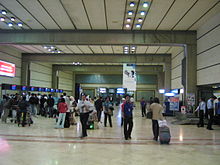

Source: Craig
Terminal 2 is the second terminal built, and was opened in 1991. It is located on the north-western side of the airport, opposite Terminal 1. Like Terminal 1, it has three sub-terminals, labeled as D, E and F, each of which has seven gates and 25 check-in counters. Terminal 2 caters to umrah (minor haj) flights and was converted into an international low-cost carrier terminal (LCCT) in 2019. Currently, Terminal 2 Domestic (2D & 2E) is home to Sriwijaya Air, Nam Air, Indonesia AirAsia, and Batik Air’s domestic flights, while Terminal 2 International (2F) is an international LCCT for AirAsia, Indonesia AirAsia, Thai AirAsia, Sriwijaya Air, Lion Air, Malindo, Thai Lion Air, Citilink, Jetstar Asia Airways, Cebu Pacific and Scoot international flights.
Terminal 3
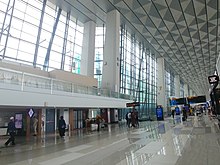

Source: Lawrence Ruiz
Terminal 3 is the airport’s newest and largest terminal. It is used as a base for Garuda Indonesia and serves as a full-service terminal for both international and domestic flights.
The original Terminal 3 was officially opened for international flights on 15 November 2011, when all Indonesia AirAsia flights started using Terminal 3 as its new base for international, as well as domestic flights. It was built to cater to low-cost carriers. The terminal was located on the north-eastern side of the airport.
On 9 August 2016, a new passenger terminal named ‘Terminal 3 Ultimate’, was officially opened. The original Terminal 3 was revamped and integrated into the new Terminal 3 Ultimate. The terminal was built at a cost of 4.7 trillion rupiah. It has a floor area of 422,804 m2 (4,551,020 sq ft) and was built to handle 25 million passengers per annum. Unlike Terminal 1 and 2, the Terminal 3 Ultimate architectural style is vastly different, using an eco-friendly contemporary modern design. It is equipped with 10 international gates, 18 domestic gates, 112 check-in counters, 41 aerobridges and 10 bus gates.
In 2018, the terminal’s west pier (Pier 1) was extended. 8 new aerobridges were added, with 7 catering to wide-body aircraft and 1 catering to narrow-body aircraft.
Terminal 3 is equipped with BHS level 5 to detect bombs, an Airport Security System (ASS) which can control up to 600 CCTVs to detect faces who are available in the security register, an Intelligence Building Management System (IBMS) which can control uses of water and electricity (eco-green), rainwater system to produce clean water from rain, a recycled water system to produce toilet water from used toilet water, and illumination technology control to illuminate the terminal depending on the weather surrounding the terminal. Terminal 3 will be able to serve 60 airplanes from the current 40 airplanes.
Terminal 4
Angkasa Pura II has undertaken a plan to build Terminal 4, which will be located on the north side of runway 1, south of Terminal 3, and east of Terminal 1. Terminal 4 will be built at the 4th stage as part of the development of the airport. The terminal will be built on 130 hectares of land, which will be able to serve 45 million passengers annually. The terminal will be designed in the form of an ‘H’ and use eco-friendly and modern design, similar to the design of Terminal 3. The terminal is expected to be operational by 2024.
Freight Terminal
The freight terminal is located on the east side of terminal 1. This terminal was used to handle cargo at the Soekarno–Hatta International Airport, both domestic and international cargo. In the latest master plan, the freight terminal will move to the west side of terminal 2 and have a larger capacity.
Navigation Aids
Runway 07L/25R and 07R/25L are equipped with Instrument Landing System (ILS). The runways are also equipped with VOR/DME.
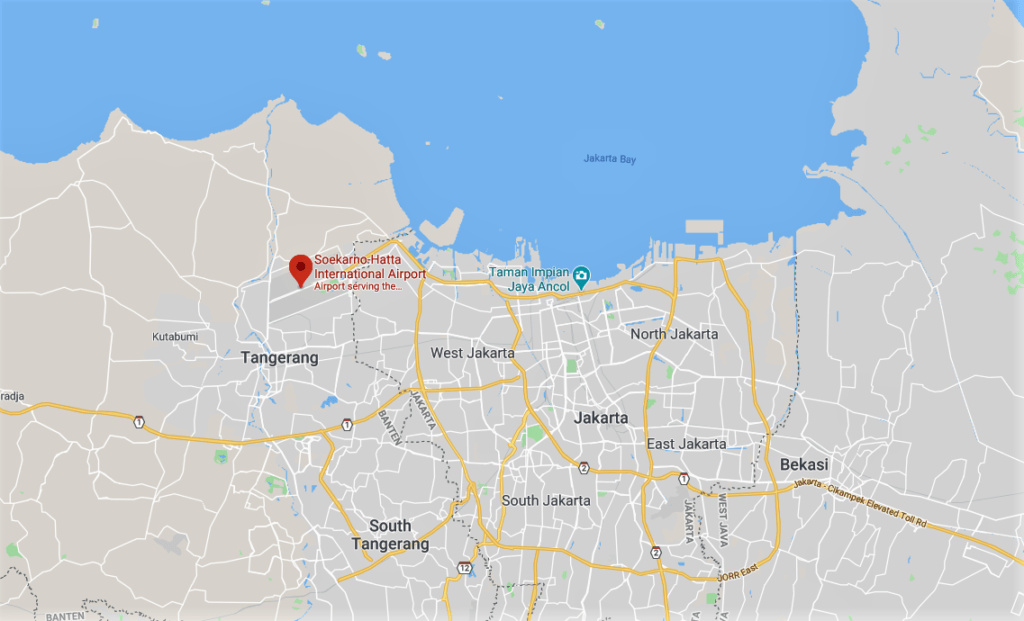

Airlines and destinations
Passenger
| AirAsia | Johor Bahru, Kuala Lumpur–International, Penang |
| Air China | Beijing–Capital |
| All Nippon Airways | Tokyo–Haneda, Tokyo–Narita |
| Asiana Airlines | Seoul–Incheon |
| Batik Air | Ambon, Balikpapan, Banda Aceh, Bandar Lampung, Bangkok–Don Mueang, Banyuwangi, Batam, Berau, Denpasar/Bali, Gorontalo, Guilin, Jambi, Jayapura, Kendari, Kuala Lumpur–International, Kunming, Kupang, Labuan Bajo, Lubuklinggau, Luwuk, Makassar, Manado, Manokwari, Mataram–Lombok, Medan, Nanning, Padang, Palangkaraya, Palembang, Palu, Pangkal Pinang (begins 1 June 2020), Pekanbaru, Penang, Samarinda, Semarang, Singapore, Sorong, Surabaya, Taipei–Taoyuan, Tanjung Pandan, Tarakan, Ternate, Yogyakarta–International Charter: Haikou |
| Cathay Pacific | Hong Kong |
| Cebu Pacific | Manila |
| China Airlines | Taipei–Taoyuan |
| China Eastern Airlines | Shanghai–Pudong |
| China Southern Airlines | Guangzhou, Shenzhen |
| Citilink | Balikpapan, Bandar Lampung, Banyuwangi, Batam, Bengkulu, Denpasar/Bali, Jambi, Jayapura, Kertajati, Kuala Lumpur–International, Labuan Bajo, Makassar, Malang, Manado, Medan, Padang, Palangkaraya, Palembang, Pangkal Pinang, Pekanbaru, Penang, Phnom Penh, Pontianak, Samarinda, Semarang, Silangit, Surabaya, Surakarta/Solo, Tanjung Pandan, Yogyakarta–International |
| Emirates | Dubai–International |
| Ethiopian Airlines | Addis Ababa, Singapore |
| Etihad Airways | Abu Dhabi |
| EVA Air | Taipei–Taoyuan |
| Flynas | Charter: Jeddah |
| Garuda Indonesia | Ambon, Amsterdam, Balikpapan, Banda Aceh, Bandar Lampung, Bangkok–Suvarnabhumi, Banjarmasin, Banyuwangi, Batam, Bengkulu, Biak, Denpasar/Bali, Guangzhou, Gunungsitoli, Hong Kong, Jambi, Jayapura, Jeddah, Kendari, Kuala Lumpur–International, Kupang, Labuan Bajo, Makassar, Malang, Manado, Mataram–Lombok, Medan, Medina, Melbourne, Merauke, Osaka–Kansai, Padang, Palangkaraya, Palembang, Palu, Pangkal Pinang, Pekanbaru, Perth, Pontianak, Samarinda, Semarang, Seoul–Incheon, Shanghai–Pudong, Sibolga, Silangit, Singapore, Sorong, Surabaya, Surakarta/Solo, Sydney, Tanjung Pandan, Tanjung Pinang, Ternate, Tokyo–Haneda, Yogyakarta–International Charter: Christmas Island |
| Indonesia AirAsia | Bangkok–Don Mueang, Denpasar/Bali, Johor Bahru,[63][64] Kuala Lumpur–International, Mataram–Lombok, Medan, Penang, Semarang, Singapore, Sorong, Surabaya, Tanjung Pandan, Yogyakarta–International |
| Japan Airlines | Tokyo–Narita |
| Jet Asia Airways | Bangkok–Suvarnabhumi |
| Jetstar Asia Airways | Singapore |
| KLM | Amsterdam, Kuala Lumpur–International |
| Korean Air | Seoul–Incheon |
| Lion Air | Ambon, Balikpapan, Banda Aceh, Bandar Lampung, Banjarmasin, Banyuwangi, Batam, Bengkulu, Denpasar/Bali, Jambi, Jayapura, Kendari, Kuala Lumpur–International, Kupang, Makassar, Malang, Manado, Mataram–Lombok, Medan, Padang, Palangkaraya, Palembang, Pangkal Pinang, Palu, Pekanbaru, Pontianak, Semarang, Singapore, Surabaya, Surakarta/Solo, Tanjung Pandan, Tanjung Pinang, Tarakan, Ternate, Yogyakarta–International Charter: Sanya |
| Malaysia Airlines | Kuala Lumpur–International |
| Malindo Air | Kuala Lumpur–International |
| NAM Air | Lubuklinggau, Muara Bungo, Palembang, Pangkal Pinang, Pontianak, Sampit, Semarang, Surabaya, Tanjung Pandan |
| Oman Air | Muscat |
| Philippine Airlines | Manila |
| Qantas | Sydney |
| Qatar Airways | Doha |
| Royal Brunei Airlines | Bandar Seri Begawan |
| Saudia | Jeddah, Medina, Riyadh |
| Scoot | Singapore |
| Shenzhen Airlines | Shenzhen |
| Singapore Airlines | Singapore |
| SriLankan Airlines | Colombo–Bandaranaike |
| Sriwijaya Air | Bandar Lampung, Batam, Denpasar/Bali, Jambi, Jayapura, Makassar, Malang, Manado, Medan, Padang, Palembang, Pangkal Pinang, Pontianak, Semarang, Silangit, Surabaya, Surakarta/Solo, Tanjung Pandan, Tanjung Pinang, Yogyakarta–International Charter: Haikou, Nanning, Zhangjiajie |
| Thai Airways | Bangkok–Suvarnabhumi |
| Thai Lion Air | Bangkok–Don Mueang |
| Trigana Air Service | Pangkalan Bun |
| Turkish Airlines | Istanbul |
| Uzbekistan Airways | Tashkent |
| Vietnam Airlines | Ho Chi Minh City |
| XiamenAir | Fuzhou, Xiamen |
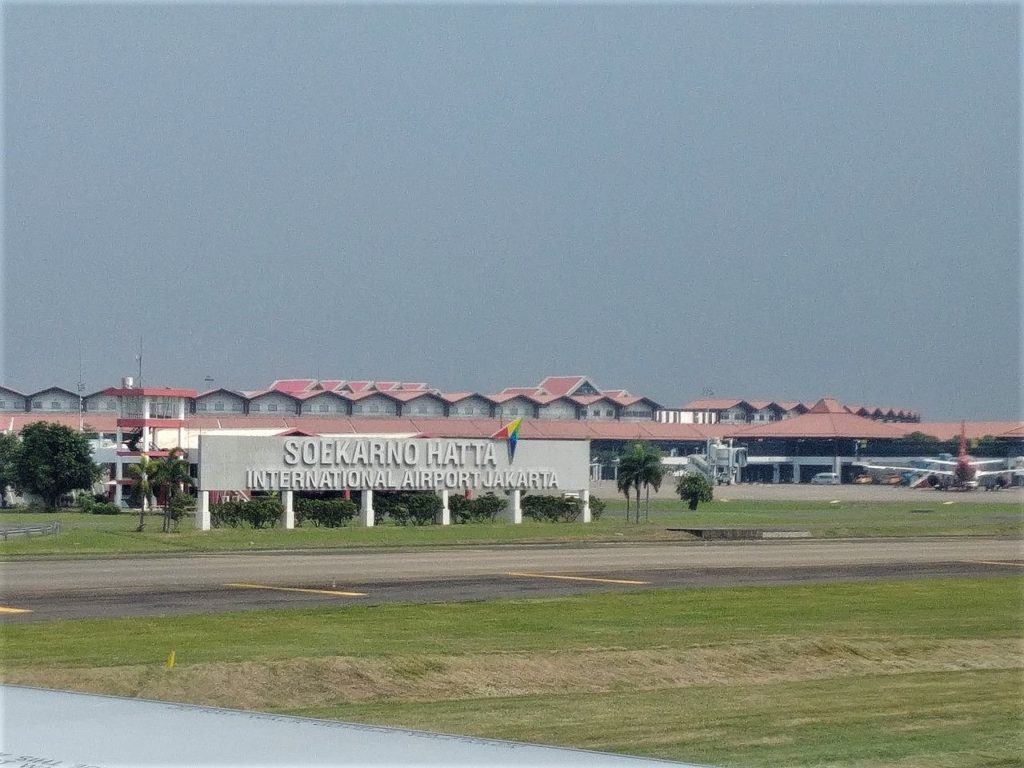

Source: Lawrence Ruiz
Cargo
| ANA Cargo | Tokyo–Narita |
| Asialink Cargo Airlines | Pangkal Pinang |
| Cardig Air | Ho Chi Minh City, Shenzhen, Singapore |
| Cargolux | Luxembourg, Hong Kong |
| Cathay Pacific Cargo | Hanoi, Hong Kong, Penang |
| China Airlines Cargo | Taipei–Taoyuan, Kuala Lumpur–International |
| FedEx Express | Guangzhou, Ho Chi Minh City, Singapore, Bangkok-Suvarnabhumi |
| K-Mile Air | Bangkok-Suvarnabhumi, Singapore |
| Korean Air Cargo | Ho Chi Minh City, Penang, Seoul–Incheon |
| MASkargo | Kuala Lumpur–International |
| My Indo Airlines | Singapore, Balikpapan, Semarang |
| Qantas Freight | Sydney |
| Singapore Airlines Cargo | Singapore |
| Raya Airways | Kuala Lumpur–Subang |
| Tri-MG Intra Asia Airlines | Batam, Kuala Lumpur–International, Singapore |
Airport facilities
Terminals 1 and 2 were designed to resemble a traditional joglo Javanese construction. The approach has been emphasized by the inclusion of well-maintained gardens located near all boarding areas. Terminal 3 and other new airport buildings use an eco-friendly and modern design.
Aircraft maintenance
Maintenance facilities for aircraft in Soekarno–Hatta International Airport are supported by GMF AeroAsia (Garuda Maintenance Facility). They include 480,000 square meters (5,200,000 sq ft) of built-up structures, including four hangars, a spares warehouse, workshops, utility buildings, a ground support equipment building, chemical stores, an engine test cell, and management offices. In addition, GMF AeroAsia has an apron capable of handling up to 50 aircraft, taxiways, a run-up bay, and a waste treatment area, taking up 1,150,000 square meters (12,400,000 sq ft).
Hangar 1 was built in 1991 and was designed for Boeing 747s. It has two full docks and is 22,000 square meters (240,000 sq ft). Hangar 2 is 23,000 square meters (250,000 sq ft) and has 3 aircraft bays. It can perform minor A and B checks. It can hold up to one narrow body and one wide-body jet. Hangar 3 is also 23,000 square meters (250,000 sq ft). It normally holds up to 3 narrow-body aircraft but can be configured to hold up to one wide-body and one narrow body. It has 7 bays with 4 full docks, 6 roof-mounted cranes and one bay designed for McDonnell Douglas MD-11s, McDonnell Douglas DC-10s, and wide-body Airbus A330s aircraft. Hangar 4 is 67,022 square meters (721,420 sq ft). The Hangar 4 was opened in 2015 and was designed for narrow-body aircraft like B737s and A320s. It can handle 16 narrow-body aircraft at one time.
Golf course
There is a golf course at the Soekarno–Hatta International Airport supported by the Cengkareng Golf Club. The golf course has been open since 1999. It is located on the left side of the airport main gate by the Sheraton Bandara Hotel. The Cengkareng Golf Club is in the 102-hectare (250-acre) Soewarna Business Park at Soekarno–Hatta International Airport. In 2005 and 2008, this golf course was used for Indonesia Open, a part of the PGA European Tour. There are 18 holes in the golf course.
Airport hotel
Soekarno–Hatta International Airport has a hotel, the Bandara International Hotel, managed by AccorHotels. The Bandara International Hotel, which is located on the left side of the main exit road from the airport, has 4 floors with 220 guest rooms. The airport now has other hotels, including budget such as Ibis Styles, Pop! Hotels, Swiss-Belhotel, Orchard Hotel, Swiss-Belinn, Ibis Budget, and Amaris as an alternative. Terminal 3 of the airport has a Digital Airport Hotel or Capsule hotel with 120 rooms, which has Alpha-type and Beta-type rooms.
Lounges
There are five airport lounges in the departure area. The Jasa Angkasa Semesta (JAS) Lounge is available for first and business class passengers of Cathay Pacific, Qantas, EVA Air, Saudia, and Singapore Airlines. The Pura Indah Lounge is available for first and business class passengers of Singapore Airlines, KLM, Malaysia Airlines, Emirates, Cathay Pacific, and China Airlines. The new Garuda Indonesia lounge is available for their business class and first-class passengers only, as well as GECC and GarudaMiles gold and above cardholders. The BNI Executive Lounge is located next to the Garuda Indonesia Lounge, the lounge serves passengers from all airlines. Other lounges are available outside of the departures area, operated by companies such as Indosat, Sapphire, PT Mandara Jasindo Sena, Telkomsel, and XL Axiata. As of 2020, the only airline lounge in Terminal 2 was opened named Batik Air Business Class Lounge inside the waiting room C7. The Garuda Indonesia lounge has been moved to Terminal 3 Ultimate.
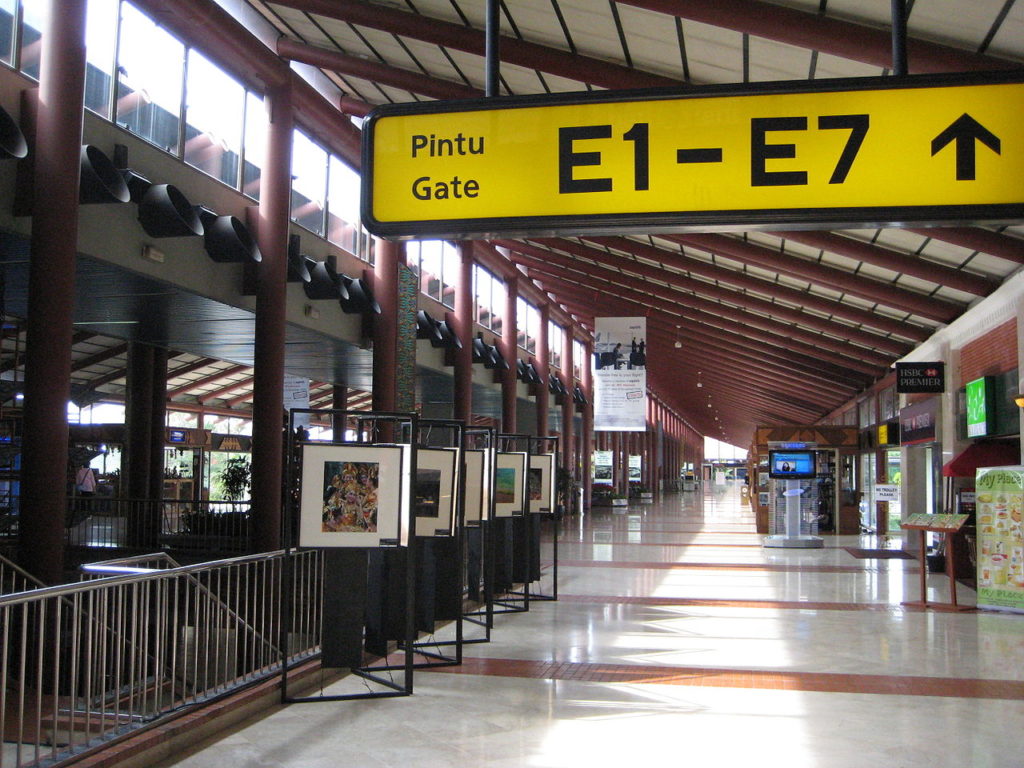

Source: Transferred from English Wikipedia; en:File:Jakarta Airport Dept area.jpg
Other facilities
Shopping area at Soekarno–Hatta International Airport
The airport contains the head office of Garuda Indonesia, Garuda Indonesia Management Building, located within the Garuda Indonesia City Center. Angkasa Pura II’s head office is on the airport property.
There are 21 reading corners located in the waiting rooms of Terminal 2D, 2E and 2F. Shopping areas are also available in all terminals. Duty-free shops, souvenir shops, restaurants, and a cafeteria can be found there. There is a new “Shopping Arcade” located in terminal 1C. There are no shops in the arrival zones of the terminals, except for Terminal 3, where several cafes and fast-food restaurant chains are located.
Lintasarta, Internux (via YelloChat Free WiFi) and Telkom Indonesia have provided WiFi networks for the airport. The three networks allow users to connect to another network if a specific one is operational. Since November 2013, Terminal 2 has free WiFi covering the whole terminal and free WiFi for Terminal 1 is servicing as of July 2014. Terminal 3 now has free WiFi covering since November 2014.
To handle the overcrowding of smoking rooms being used, airport authorities have drawn up plans to build a smoking area in a garden near the rest area in Terminal 1A. It was opened in January 2015 and it will be developed to other terminals, if necessary.
Ground transportation
There are several transportation options available for access to the airport: local airport terminal shuttles, trains, buses, taxi services of various kinds, and cars. There is a free shuttle bus service and people maneuver system Skytrain to connect the terminals of the airport.
Bus
Several bus companies, including the state-owned Perum DAMRI and private company Primajasa, provide services to various destinations from the airport. Jabodetabek Airport Connexion which consist of Perum DAMRI,Perum PPD, Big Bird dan Sinar Jaya Megah Langgeng serve routes from the airport to certain malls and hotels in Greater Jakarta. The buses operate from 06.00 to 23.00 with routes:
Travel time to and from the center of Jakarta (at the Gambir Station) takes around 70 minutes, depending on traffic. Buses to the airport leave from the various terminals in central Jakarta (Gambir) and surrounding areas.
BUS – Shuttle service[edit]
| Service | Destination (Soetta Airport,Terminal 1, 2 and 3) | ||
|---|---|---|---|
| Shuttle Airport Bus | |||
| Agramas | Pusat Grosir Cililitan | East Jakarta | |
| Citilink Shuttle | Scientia Square Park | South Tangerang | |
| Citilink Shuttle | SCBD | Central Jakarta | |
| Damri | Bandung | Bandung | |
| Damri | Bekasi Kayuringin Bus Terminal | Bekasi | |
| Damri | Bekasi Trade Center | Bekasi | |
| Damri | Blok M Bus Terminal | South Jakarta | |
| Damri | Botani Square Mall | Bogor | |
| Damri | Cikarang | Cikarang | |
| Damri | Citra Raya | Tangerang Regency | |
| Damri | City Mall Cibinong | Cibinong | |
| Damri | Depok | Depok | |
| Damri | Epicentrum | South Jakarta | |
| Damri | Gambir Railway Station | Central Jakarta | |
| Damri | Kampung Rambutan Bus Terminal | East Jakarta | |
| Damri | Karawang | Karawang | |
| Damri | Kemang Pratama | Bekasi | |
| Damri | Kemayoran | Central Jakarta | |
| Damri | Kota Harapan Indah | Bekasi | |
| Damri | Lebak Bulus | South Jakarta | |
| Damri | Lippo Karawaci Mall | Tangerang | |
| Damri | Mangga Dua Square Mall | North Jakarta | |
| Damri | Pandeglang | Pandeglang Regency | |
| Damri | Pasar Minggu Bus Terminal | South Jakarta | |
| Damri | Pondok Cabe | South Tangerang | |
| Damri | Pramuka City | Central Jakarta | |
| Damri | Pulo Gebang | East Jakarta | |
| Damri | Purwakarta | Purwakarta | |
| Damri | Rawamangun Bus Terminal | East Jakarta | |
| Damri | Sentul City | Bogor | |
| Damri | Serang–Cilegon-Merak | Banten | |
| Damri | Sukabumi | Sukabumi | |
| Damri | Tanjung Priok Bus Terminal | North Jakarta | |
| Damri | WTC Serpong | South Tangerang | |
| Primajasa | Bandung Batununggal | Bandung | |
| Primajasa | Bandung Caringin | Bandung | |
| Hiba Utama | Depok Bus Terminal | Depok | |
| Sinar Jaya | Cileungsi Bus Terminal | Bogor Regency | |
| Redwhitestar | Bandung Gedungsate | Bandung | |
| Primajasa RWS | Bandung Diponegoro32 | Bandung |
JA Connexion Bus
Greater Jakarta Transportation Agency (BPTJ) operates this service, which uses air conditioned buses with comfortable seats and Wi-Fi. The routes are:
- Hotel Borobudur-Hotel Alia-Hotel Luminor-Airport.
- Hotel Aryaduta-Hotel Sari Pan Pacific-Airport.
- Hotel Grand Cemara-Hotel Ibis Thamrin-Hotel Milenium-Airport.
- Hotel Sahid Jaya-Mall Grand Indonesia-Hotel Ascot-Airport.
- Hotel Amaris Thamrin City-Airport.
- Hotel Sahid Jaya Lippo Cikarang-Airport.
- Bogor Trade Mall-Airport.
- Mall Taman Anggrek-Airport.
- Mall Plaza Senayan-Airport.
- Mall ITC Cempaka Mas-Airport.
- Mall Kelapa Gading-Airport.
- Pondok Indah Mall-Airport
- Summarecon Serpong-Airport.
- ITC Tanah Abang-Airport.
- Bubulak-Bukit Cimanggu City(Bogor Icon)-Sentul-Airport
- Pondok Gede (Transmart Atrium) – Airport.
- Taman mini (Tamini Square) – Airport.
Inter-terminal shuttle service
Soekarno–Hatta International Airport provides a free shuttle bus that connects Terminals 1, 2 and 3. The shuttle bus can be found at the arrival hall of Terminal 1A–1B–1C, on the eastern wing of the arrival hall of Terminal 2F and in front of the departure hall of Terminal 3.
Taxicab
The airport is connected to Jakarta’s city center via the Prof. Dr. Ir. Soedijatmo Toll Road. There is extensive car parking, including long-stay facilities, at the airport. Various taxi and shuttle services are provided by several operators.
Rail
Skytrain (inter-terminal shuttle service)
The plan to build an airport automated people mover system to connect Terminals 1, 2, and 3, and the Airport Rail Link Station, was announced in 2013. Starting on 17 September 2017, the people mover, named Skytrain, is officially opened to connect Terminal 3 and Terminal 2 vice versa, with a headway of 5 minutes. One set of Skytrain can serve 2×88 passengers. It temporarily operates between 07.00–10.00, 13.00–14.00 and 17.00–19.00.
Airport rail link
Soekarno–Hatta Airport Rail Link connects Jakarta city center with the airport. The train takes 45–55 minutes from Manggarai station at South Jakarta to SHIA station. Each train accommodates up to 272 passengers and will serve about 35,000 passengers with 122 trips a day, when fully operational. There is a 30 minutes interval between the train departures. As Manggarai station is under renovation, BNI City station is being temporary as the terminus for the city center. The airport train currently makes 42 trips daily between 3.51 a.m. and 9.51 p.m., departing from BNI City station in to SHIA, with a stop at Batuceper station. Trips from Soekarno-Hatta to BNI City runs from 6.10 a.m. to 11.10 p.m., departing every hour. The ticket price for the journey is IDR70 thousand (US$5). Passengers can only book train tickets using credit and debit cards, as well as electronic money via Railink app available for smartphones or vending machines at stations.
An express line between Halim Perdanakusuma Airport and the airport is under planning stage, to be built by an investor as a public–private partnership. The express train will take 30 minutes to connect the airports. In early 2015, the government changed the fund from participation to not funding at all, so the contract for Rp 28 billion will be revised, including new rail express tariff. The construction of this line has been delayed and completion is now projected to be in 2019 at the earliest.
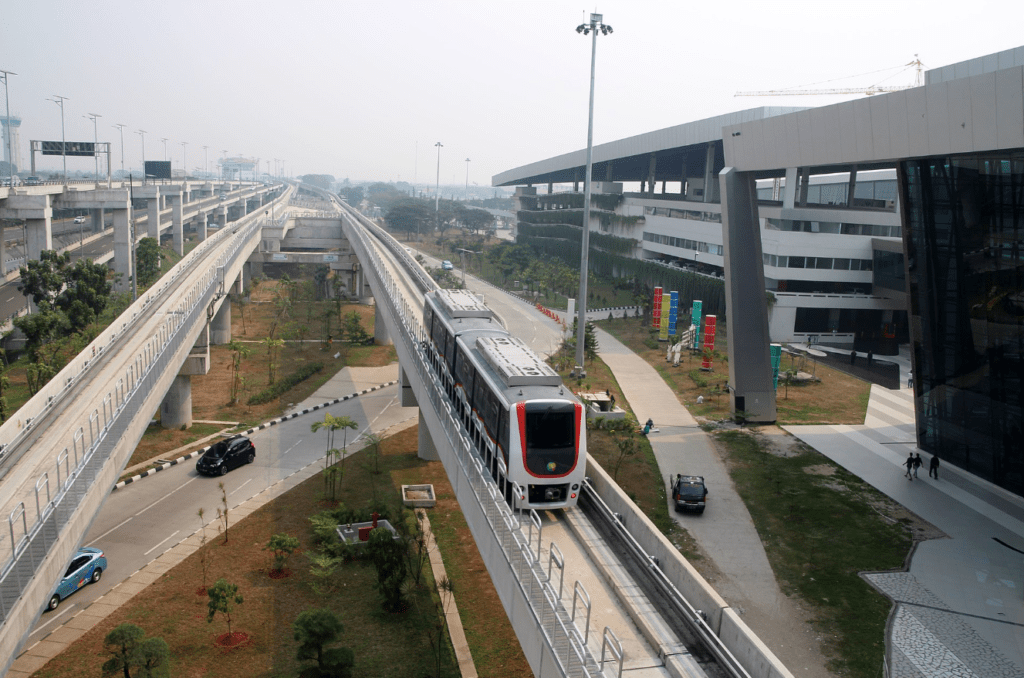

Source: Gunawan Kartapranata
Accidents and incidents
- On 28 October 1997, a Trigana Air Service Fokker F-28 Fellowship 3000 passenger plane returned to land at Jakarta–Soekarno–Hatta International Airport after the aircraft experienced technical problems two minutes after takeoff. Smoke and severe heat had entered the cockpit and the passenger cabin. The airplane sustained damage due to the heat.
- On 23 January 2003, a Star Air Boeing 737 touched down 500 meters (1,600 ft) past the threshold of runway 25L, a little left of the centerline, at a time of heavy rainfall with associated heavy winds. It went off the side of the runway, causing substantial damage to the aircraft’s undercarriage and belly.
- 2003 Soekarno–Hatta International Airport bombing – On 27 April 2003, a bomb exploded in terminal 2, departure hall of the domestic terminal. The bomb was hidden under a table of a KFC stall and exploded during lunch hours. 10 people were injured in the blast, one 17-year-old teenager identified as Yuli was seriously injured. Her legs had to be amputated. Emergency services were rushed to the scene and suspected that the motive of the bombing was due to the Free Aceh Movement, a separatist movement in Aceh. This was proved by the location of the blast, which was located on the domestic passenger hall rather than on the international passenger hall.
- On 11 August 2003, a Garuda Indonesia Fokker F-28 Fellowship 3000R suffered a left main gear collapse after a flight from Surabaya.
- On 9 March 2009, a Lion Air MD-90 overran runway 25L, due to an unstable approach 100 meters (330 ft) before the runway in rainfall and strong winds, in which the aircraft touched down to the left of the centerline. Although its thrust reversers were functioning, it veered to the right, resulting in the aircraft resting 90 degrees off the runway.
Awards
In 1995, the landscaping of Soekarno–Hatta airport was awarded by Aga Khan Award for Architecture as one of the best examples of integrating the terminal building pavilions, with lush tropical garden harmoniously.
Soekarno–Hatta International Airport was ranked fourth on the Skytrax World’s Most Improved Airport 2014 list based on surveys of 12.85 million passengers from 110 countries. Skytrax also ranked Soekarno–Hatta International Airport as a 3-Star Airport.
In 2017, Soekarno–Hatta International Airport was ranked first on the Skytrax World’s Most Improved Airport 2017.
Source: https://en.wikipedia.org/wiki/Soekarno%E2%80%93Hatta_International_Airport
